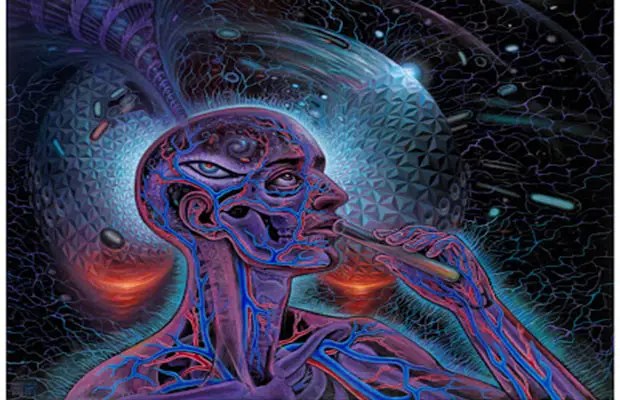Image Credits
 By Dr. Terry Willard
By Dr. Terry Willard
One of the most wondrous parts of our physical body is the Pineal Gland. It is also called the epiphysis cerebri, epiphysis, conarium or the “Third Eye.” It is a small endocrine gland in the vertebrate brain. It produces serotonin and melatonin, hormones that affect mood and modulate our wake/sleep patterns and seasonal functions. Its shape resembles a tiny pine-cone (hence its name in Latin, pinea, which means “pinecone”), and it is located near the center of the brain, between the two hemispheres, tucked in a groove where the two rounded thalamic bodies join.
Even though this gland is hidden deep inside the brain and is only the size of a pea, it has been an almost fanatical obsession of masters, mystery schools and religions throughout the ages. Rene Descartes, the famous philosopher dedicated much of his life to studying the pineal gland, stating it is the “principal seat of the soul”. He believed it is the connection between the physical body and the mind/soul. We also see it playing prominent in the writings of Pythagoras, Plato, and Iamblichus, as well as in Egyptian, Tibetan and Roman Catholic Church. It is even mentioned by the Founding Fathers of the USA.
One of the central figures in Egyptian mystery school myths is the Eye of Horus. Many feel the eye of Horus is really the third eye, or the pineal gland. There does seem to be a lot of similarities, at least from an anatomical point of view.
The Egyptian connection does not stop there, by any means — in fact some feel the great pyramid of Giza was not only built to stimulate Pineal activity, it was built with the initiation chamber in the shape/ location of the pineal gland.
In earlier blogs we have talked about the law of similarities, fractal relationships ormorphic resonance. When we have things with such a great degree of similarity of shape, they can communicate (vibrate) with each other with ease. This pyramid/ third eye connection was not lost on the Founding Fathers of the U.S.A., who were mostly Free Masons; they used it as part of the country’s seal, which can be seen on the back of the American dollar bill to this day.
Many of the mystery schools often coded the information in the form of a pine cone. We can see this prominently in the Vatican as one of the largest statues to nature. It also retains a dominant role on the staff of the Pope. The entwined snakes on Osiris’ staff are reminiscent of the kundalini forces entwining up the spinal cord to end in the pineal gland.
The Pineal Gland develops in the human fetus around 21 days, responding to light and darkness. Even though it is hidden deep inside the brain, it has photoreceptor cells that bear a strong resemblance to the retinal cells of the eyes. In some species, like lamprey (jawless, blood sucking eel-like fish) and tuatara (reptile), the pineal gland has access to the surface of the skin (a foramen opening) and acts as a third eye with photoreception, having cornea, lens and retina. In Humans, the pineal gland helps set up the circadian rhythms. Melatonin is stimulated by darkness and inhibited by light. Why would we have an organ buried deep inside our brain that responds to light?
Recent scientific research has shown there are substantial, biological similarities between the retina and the pineal gland. Piezoelectric microcrystals may be transmitting photons that can be picked up by the retina-like tissue in the pineal gland—where they are then sent to the brain and descrambled into visual images. This may be responsible for what we call the “mind’s eye”—such as when we suddenly see a mental image of our friend right before he or she calls us. DNA itself seems to accumulate light and in the process transmit light to other cells as a form of communication. Can we watch this process in our mind’s eye? Clearly, more research is necessary to fully understand how the Pineal Gland actually works, but we already have some intriguing research available.
Read Full Article at: http://www.drterrywillard.com/pineal-gland-part-1-portal-of-higher-dimensions/
Image Credit: http://alexgrey.com/







Comments
Very informative.. thanks for posting Ben.